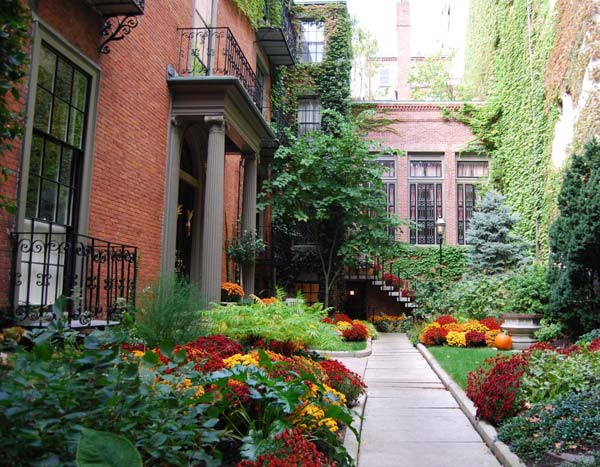Courtyard Architecture: Invite The Outdoors In
 After decades of big yards and boxy homes, more homeowners are opting for a throwback to ancient days: the courtyard. Often enclosed on several or all sides, courtyard homes bring the yard inside, offering an extra layer of privacy and allowing natural light to flood into the house.
After decades of big yards and boxy homes, more homeowners are opting for a throwback to ancient days: the courtyard. Often enclosed on several or all sides, courtyard homes bring the yard inside, offering an extra layer of privacy and allowing natural light to flood into the house.
There's also a rising demand for motor and entry courtyards, which can serve as transitional spaces to set a calmer, off-the-street tone and welcome people into the house.
A slew of new building technologies—particularly in windows, doors and lighting—has also played a role. Window and door manufacturers now make 8-foot-wide panels that can be combined to create a 32-foot-long stretch, for example. Costing anywhere from $4,000 to more than $8,000, the bifolding panels can be opened to turn the courtyard into an extension of public space or closed off for privacy.
Similarly, LED lighting has allowed architects to transform the courtyard into a functional room at night. Retractable screen systems and evolving heating techniques have also helped make courtyards more than a seasonal space.
The screens, which start around $1,500, can roll vertically or horizontally, allowing a homeowner to leave several sets of doors open without letting bugs in. Custom wood/gas combination fire pits or fireplaces, which cost several thousand dollars, can provide warmth or just a decorative touch. And in colder climates, heated pavement can make a walk from the house to a hot tub more comfortable.
A courtyard adds about 15% to the cost of building, architects say, because designing a home with a hole in its center requires more exterior walls. But the increased outdoor space, converted from indoor space, can lead to lower energy bills as there is less home to heat.
Real-estate agents say courtyards can help resale value, particularly in temperate areas.
Courtyard architecture is one of the oldest home styles in the world. More than 5,000 years ago, courtyards were built in the Middle East and China as a protective mechanism—both from harsh weather and unfriendly neighbors.
Today, the courtyard has swung back to being a blend of geometry and nature, transforming from a functional protection from weather and foes to a space that's conducive to spending more time outside. Courtyards work with any style of home, from modern to classical, but the designs are particularly popular in warmer climates, where courtyards induce airflow. When designed properly, one end of the courtyard can be 15 degrees cooler than the other end because of cross-ventilation.
The most important aspect of courtyard design, architects say, is the sun. Wherever the best sun occurs is where the courtyard should sit, with the home designed around those angles.
Trees and plants play an important role to help induce airflow and provide shade on hotter days in courtyards, and water is a common element because it can help cool the air through evaporation and can have a calming effect on the space.
Many homeowners use their courtyards as their primary entertainment space, incorporating everything from built-in barbecue pits to swimming pools that double as movie seats.
Source: Wall Street Journal - read full story here.

